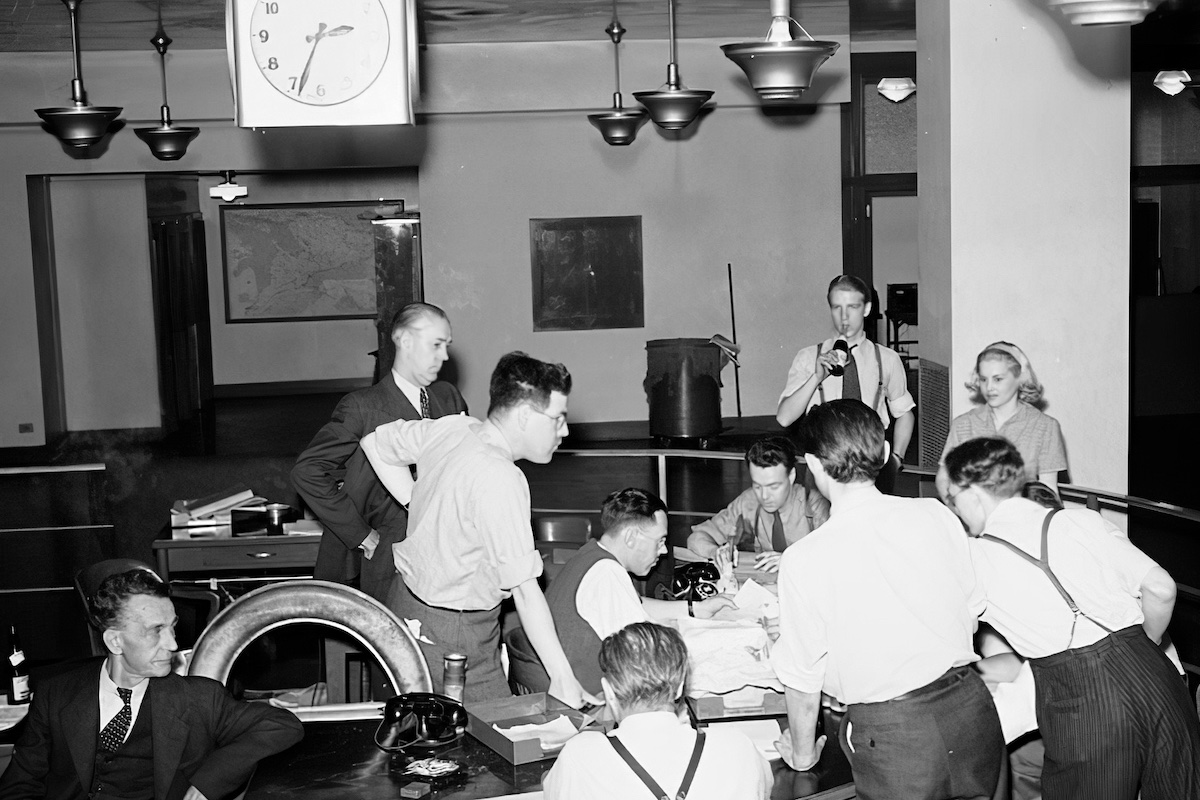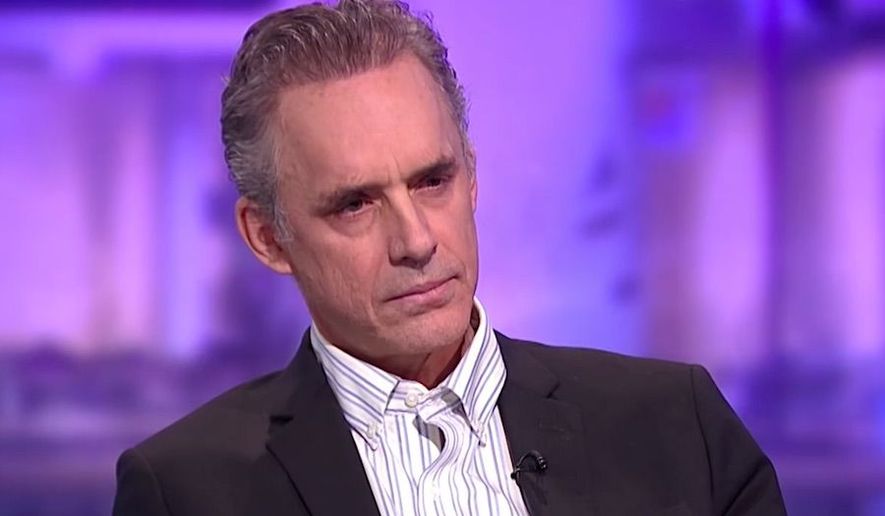Activism
The Misguided Campaign Against Journalistic Objectivity
Even historians, who have many years to consider the object of their study, inhabit “the twilight of probability.” How can those journalists tasked with writing “history’s first draft” imagine that they know which way true “harm” lies?

Locked down in a northern Ontario cottage over the summer, I found myself listening to CBC Radio’s Sunday Edition, an eclectic three-hour weekly morning show hosted, until his recent retirement, by veteran journalist and broadcaster Michael Enright. On this particular Sunday in July, guest host Anthony Germain interviewed Candis Callison, a University of British Columbia professor who teaches in both UBC’s Journalism department and its Institute for Critical Indigenous Studies. The subject of conversation was her recently published book, co-authored with fellow UBC professor Mary Lynn Young, Reckoning: Journalism’s Limits and Possibilities. “Objectivity is ‘the view from nowhere’ and potentially harmful,” announced CBC headline-writers when the interview was aired. “Is objectivity an outmoded value in journalism?”
Later, it was asserted that “more and more people, including many journalists, are questioning the sanctity of objectivity—especially when the arbiters of what’s objective truth and what’s opinion are largely the mostly-white, mostly-male people who run most newsrooms. [Prof. Callison] argues that objectivity in journalism is illusory and that it reaffirms the outlook of a white male-dominated world.”
Prof. Callison seeks a decisive shift—indeed, a revolution—away from journalistic objectivity, and an explicit embrace of subjectivity. She told Germain that “objectivity [has been] interpreted in most newsrooms as… a way of not acknowledging your social location as a journalist, that there has been a way of reporting on certain topics and certain communities in the past that may have caused harm.” Instead of attempting to rise to this “harmful” objective ideal, journalists should exhibit clarity about “whose social order you’re maintaining.” Offering models to be emulated, Prof. Callison cited Toronto journalist Tanya Talaga, whose 2017 book about Indigenous youth in Thunder Bay, Seven Fallen Feathers: Racism, Death, and Hard Truths in a Northern City, reflected Talaga’s own roots. So, too, with black activist Desmond Cole’s 2020 book The Skin We’re In: A Year of Black Resistance and Power.
Indeed, journalism “shouldn’t just be about a news story as an event, but how it’s an intersection of systems and structures” that make journalists “accountable in particular ways.” It means a shift in emphasis from “accuracy” to “advocacy,” as Germain paraphrased the argument. Prof. Callison countered that what she seeks is “near advocacy.” By way of example, she described climate-change scientists and journalists struggling with how to maintain “professional roles related to objectivity, related to providing information to society,” while also advocating “on an issue where action needs to happen.”
I am a former English professor at a Canadian University. From the 1970s onwards, I can attest, this canard about objectivity being a white male construct was pervasive in the academy. And so it is odd to now see it presented as a novelty on CBC airwaves. It is also surprising to see such a heavily theorized approach to discourse being imposed on the hard-headed, pragmatic, non-theoretical world of regular journalists.
Indeed, many of the arguments one now hears against “objectivity” were already anticipated, and dispatched, by literary critic E.D. Hirsch in his brilliant 1967 book Validity in Interpretation—in which Hirsch showed that the idea of objectivity is hardly tantamount to the “certainty” of Callison’s caricature. Rather, it goes to the idea of uniform and universal rules that govern valid methods of interpreting verbal texts—or, by extension, reported information of any sort.

But one may go back further—much further. In his 1689 Essay Concerning Human Understanding, British empiricist philosopher John Locke argued that since the sunny certainty of perfect reason is indeed a chimera (except perhaps in such realms as mathematics), we necessarily live in what Locke called “the twilight of probability.” The best we can do is make “probable”—not “certain”—judgments based on careful attention to the evidence. These judgments will always be partial, limited, biased: We are not gods but situated human beings. This doesn’t mean that we should dispense with the pursuit of objectivity—as Prof. Callison suggests—but rather that we should arm ourselves with an understanding of our limitations.
That understanding is informed by the debates about the fallible, limited form of reason we call “judgment”—and how such judgment may be cultivated—that have played out in literature and philosophy for centuries. All of Jane Austen’s novels, for instance, involve the education of what might be called “probable judgments” (Sense and Sensibility, wherein the Dashwood sisters must make important inferences about suitors from their words and manners, being the most brilliant example). Please note that Austen was a woman (albeit a white one), yet seems to have had no difficulties with evidence-based, inferential, inductive forms of reasoning. In fact, she was a virtuoso practitioner of the art.
Then and now, philosophers were very much concerned with how accurately our senses, thoughts, and judgments tracked the reality around us. They reminded readers that even our most cherished certainties always reflect a qualified accuracy: interpretations that need to be tested, and always remain open to revision, in light of new evidence, for those paying proper “attention” (another key term for Austen).
Professor Callison’s proposed journalistic revolution reflects the legacy of postmodern literary theories, which made a fetish of power structures, and demanded that the interrogation of texts be conducted through this lens. “Whose text?” became the cry one heard in modern-languages circles. Interpretation blended into ideological “critique,” which itself was but a short step to ideologically motivated “advocacy.” Ideas such as “accuracy” and “objectivity,” being unhelpful to this project, disappeared. The (mistaken) assumption was that one couldn’t take either the text or the author at face value without being a naïve empiricist channeling obsolete biases.
There was a grain of truth in all that—just as there is a grain of truth in Prof. Callison’s claim that the reported facts in our world need to be interpreted in a self-aware manner. Much of our received wisdom becomes obscured with layers of sedimented narratives, some of which have been harmful and really do need to be contested or abandoned. I would agree with her about that. But turning to an explicitly subjective approach to journalism isn’t the best way to do this.
In this regard, I can draw on my experience as a professor: Students become confused and discouraged if they are required to understand books primarily through the ideological lenses of their professors, with discussions about bias displacing the profound and complex ideas that comprise these works’ enduring appeal. For many, it’s all bias, all the time. Identity politics, in particular, has displaced the extraordinarily rich, subtle, and diverse vocabularies that individual literary texts exuberantly deploy. This renders students numb to great writers’ irony, humour, wit, and linguistic experimentation. You simply can’t afford to be playful with language if you’re busy scrutinizing every adjective and comma for racism.
In a good classroom, it is strenuously exhilarating to argue about William Blake’s poetry, or Austen’s prose, by reference to the authors’ own distinctive vocabularies on their own terms—while suspending all the fashionable skepticism about the possibility (or moral validity) of doing so. Students’ opinions tend to be more persuasive and informed when they have to ground them in the actual text, turning to page numbers and quotations to support their judgments. This attentive engagement with the text educates their faculties of “probable judgment.” Crucially, it frees them from talking about themselves (which the shy ones find liberating), and frees them to argue with everyone else in the class—even, and especially, the professor—by appealing ultimately to the words of the page, instead of unarguable ideological dogmas or personal perceptions of bias. This pursuit of text-based objectivity doesn’t require subscribing to some imaginary form of “white” “male” value set.
Prof. Callison’s “subjective journalism,” she says, should above all not “do harm,” and, even better, “mitigate harm.” But the very question of what constitutes “harm”—and how various harms should be ranked in regard to damage and urgency—is easily amenable to political and ideological distortion. Answering the question usefully relies on factual reporting by objective (yes, I will use that word) journalists who refuse to get swept up by subjective ideological commitments.
In July—when Prof. Callison spoke to Sunday Edition, at a time when memories of the George Floyd killing were still raw—many activists took it as axiomatic that the greatest harm being done to black communities was caused by police. And thanks in large part to sympathetic reporters (perhaps eschewing that old, hidebound commitment to “objectivity”), there was a brief, mainstream push to defund, or even abolish, conventional policing. Yet in recent weeks, many black community representatives are themselves arguing the opposite—and have pointed to the upsurge of killings that have resulted in some cities as a result of police rolling back their patrols and enforcement.
So which reporters succeeded in mitigating “harm”—those who cheered on the activists as an act of “near advocacy,” or those who are now reporting on the backlash against those same activists? It’s impossible to say. Indeed, it is hubristic to imagine that any reporter can or should make such subjective judgments. Even historians, who have many years to consider the object of their study, inhabit “the twilight of probability.” How can those journalists tasked with writing “history’s first draft” imagine that they know which way true “harm” lies?






